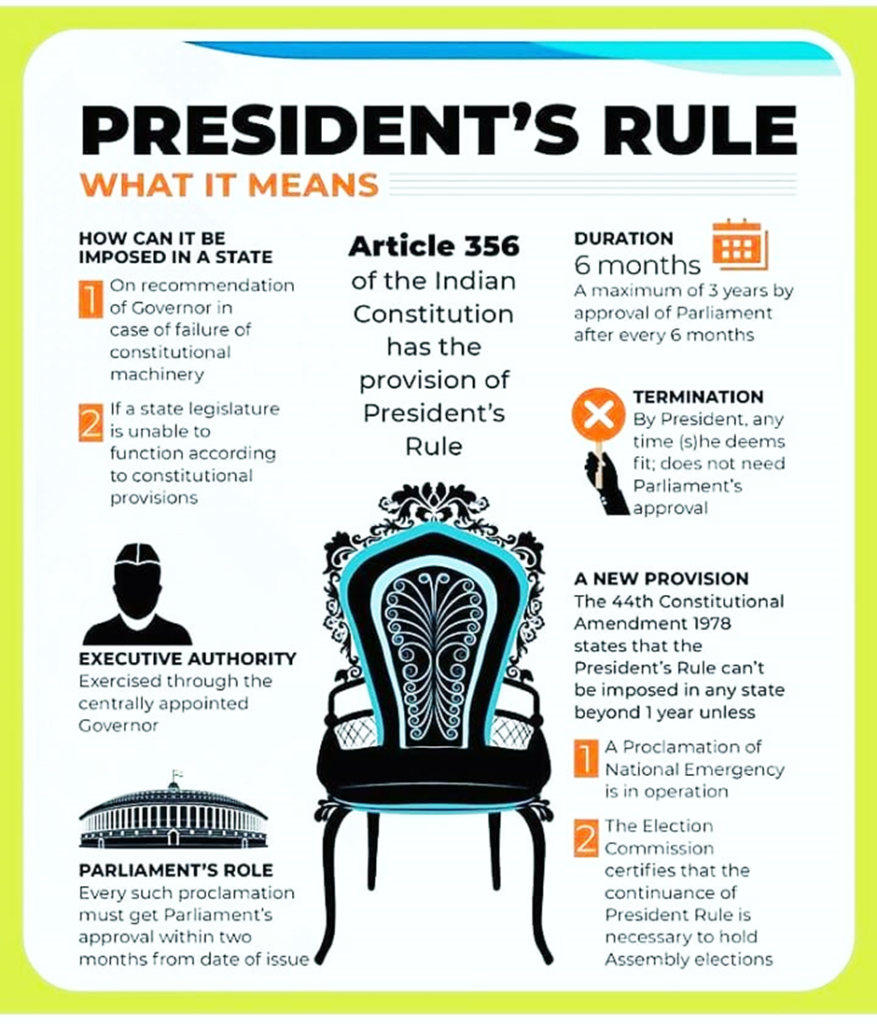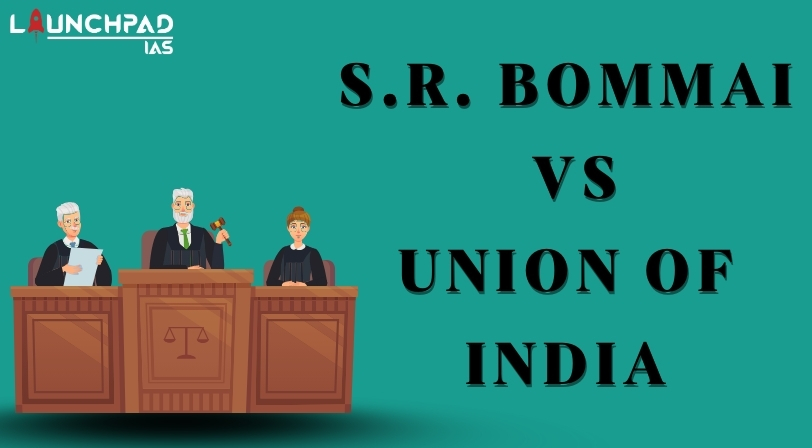About the case
- In the S.R. Bommai vs Union of India case, a nine-judge bench of the Supreme Court interpreted Article 356 of the Constitution to define the contours of the proclamation of the President’s rule.
- Article 356 contains provisions “in case of failure of constitutional machinery in States”, including that for the imposition of the President’s rule.
- While all nine judges unanimously upheld the provision, the Court ruled that the President’s decision would be subject to judicial review.
- Bommai is still the settled law on when and how the President’s rule can be imposed and was invoked in recent cases challenging the President’s rule in Uttarakhand (2016) and Arunachal Pradesh (2016), both of which were overturned by the Supreme Court.
Background
- In 1989, the Congress government at the Centre dismissed the Janata Dal-led Karnataka government by imposing the President’s rule.
- After allegedly receiving 19 letters from MLAs withdrawing their support to Chief Minister SR Bommai’s government, then Karnataka Governor P Venkatasubbaiah recommended to the President that he take over the state’s administration.
- He cited two reasons. First, Bommai did not command a majority and, hence, “it was inappropriate under the Constitution,” for him to continue. Second, that no other political party was in a position to form the government. This move, however, was extremely controversial.
- The SC ruling would later note that “the Governor did not ascertain the view of Shri Bommai” before making his report to the President.
- 7 out of the 19 legislators who allegedly withdrew support to Bommai’s government would soon make a U-turn, complaining that their signatures on the aforementioned letters were obtained by misrepresentation.
- Thus, the dismissed chief minister moved the Karnataka High Court, which dismissed his challenge against the Centre. Then, on appeal to the apex court, a nine-judge bench was constituted.
Judgment
- The SC unanimously held that the President’s proclamation can be subject to judicial review on grounds of illegality, malafide, extraneous considerations, abuse of power, or fraud.
- While the President’s subjective appraisal of the issue cannot be examined, the Court said that the material relied on for making the decision can be reviewed.
- The verdict also made Parliamentary approval necessary for imposing the President’s rule.
- Only after the proclamation is approved by both Houses of Parliament can the President exercise the power.
- Till then, the President can only suspend the state legislature.
- If the Parliament does not approve the proclamation within two months, then the government that was dismissed would automatically stand revived.
- The ruling also drew a redline for center-state relationships.
- The Bommai ruling, one of the first by the SC to scrutinize the conduct of the Governor’s office, came at a time when the President’s rule was frequently imposed to dismiss state governments run by opposition parties.
- According to research, the imposition of the President’s rule drastically decreased after the Bommai verdict.
- Between January 1950 and March 1994, the President’s Rule was imposed 100 times or an average of 2.5 times a year. Between 1995 and 2021, it has been imposed only 29 times or a little more than once a year.
Disputes Raised due to SR Bommai Case:
- The case questioned the Governor’s discretionary powers in recommending the President’s Rule in a state.
- The misuse of Article 356 to dismiss state governments on political grounds was a major issue.
- It highlighted the need to maintain a balance between the federal structure of the Constitution and the powers of the central government.
- The case discussed the extent to which the courts could review the President’s Rule proclamation.
- It addressed the issue of whether the Governor’s subjective satisfaction in recommending the President’s Rule could be subjected to judicial review.
- Concerns were raised about the erosion of federalism and states’ autonomy in India.
- The case emphasized the role of political parties and their alignment with the central government in state politics.
- Overall, the SR Bommai case played a crucial role in clarifying and limiting the use of Article 356 and safeguarding the principles of federalism in India.

Significance of Bommai judgment:
- The case became one of the most cited whenever hung Assemblies were returned and parties scrambled to form a government.
- The case put an end to the arbitrary dismissal of State governments by a hostile Central government.
- The verdict ruled that the floor of the Assembly is the only forum that should test the majority of the government of the day and not the subjective opinion of the Governor.
- SC issued an order that stated that if the Presidential Proclamation is not approved by the Parliament then if both Houses of Parliament disapprove or do not approve the Proclamation, the Proclamation lapses at the end of the two months. In such a case, the government which was dismissed revived.
- The Legislative Assembly which may have been kept in suspended animation gets reactivated.
- Also, the Court made it amply clear that a Presidential Proclamation under Article 356 is subject to judicial review.


